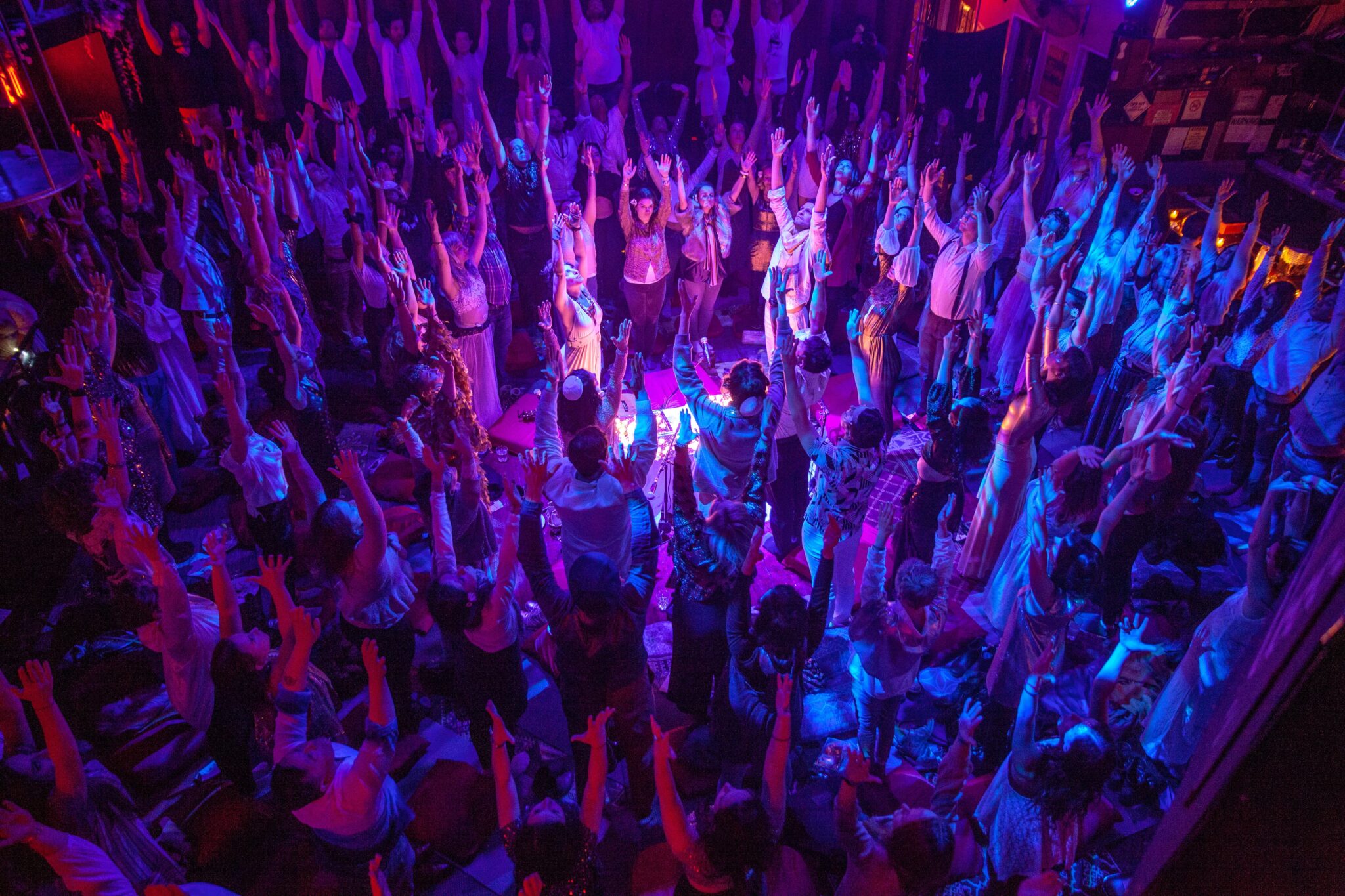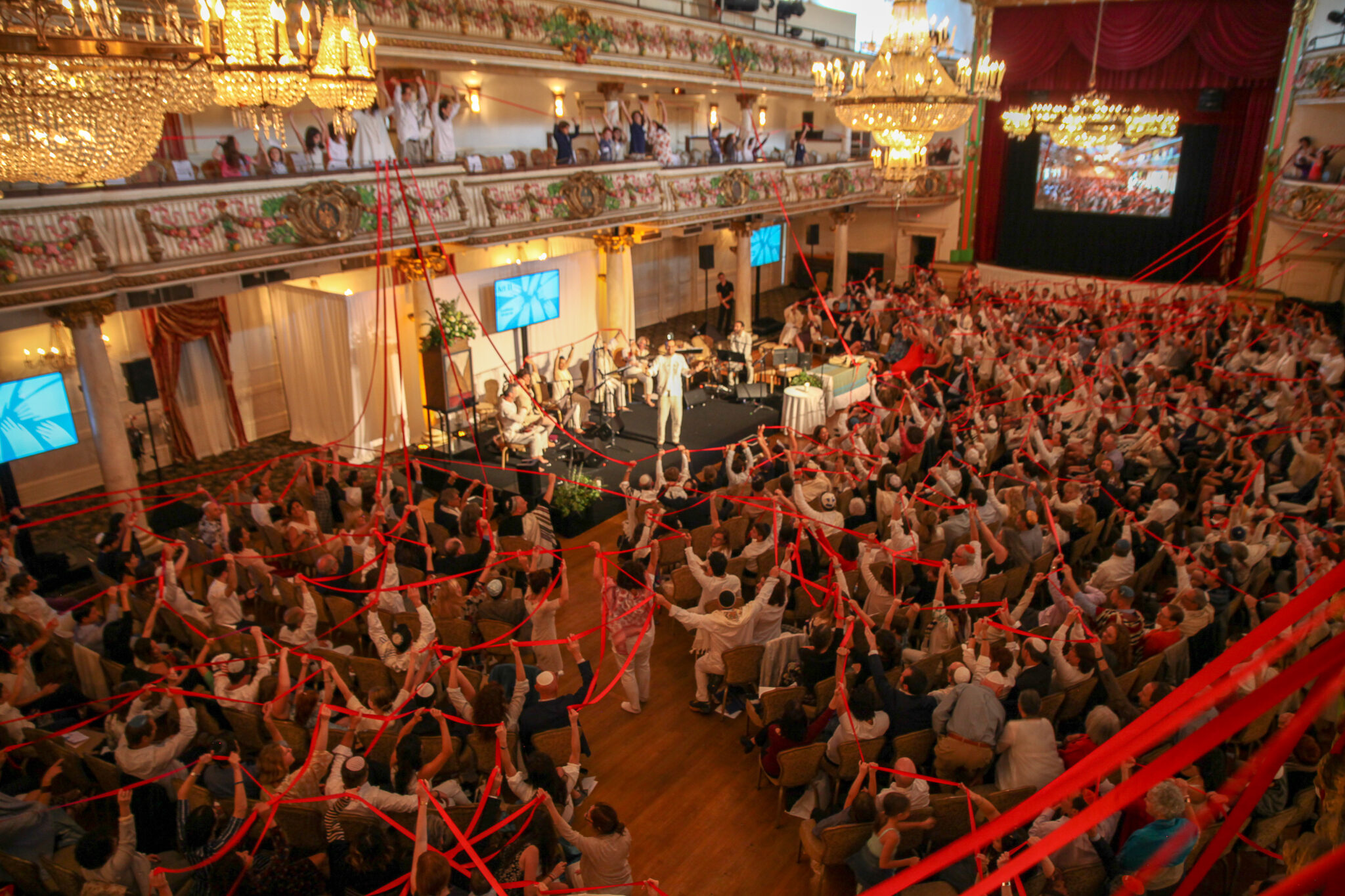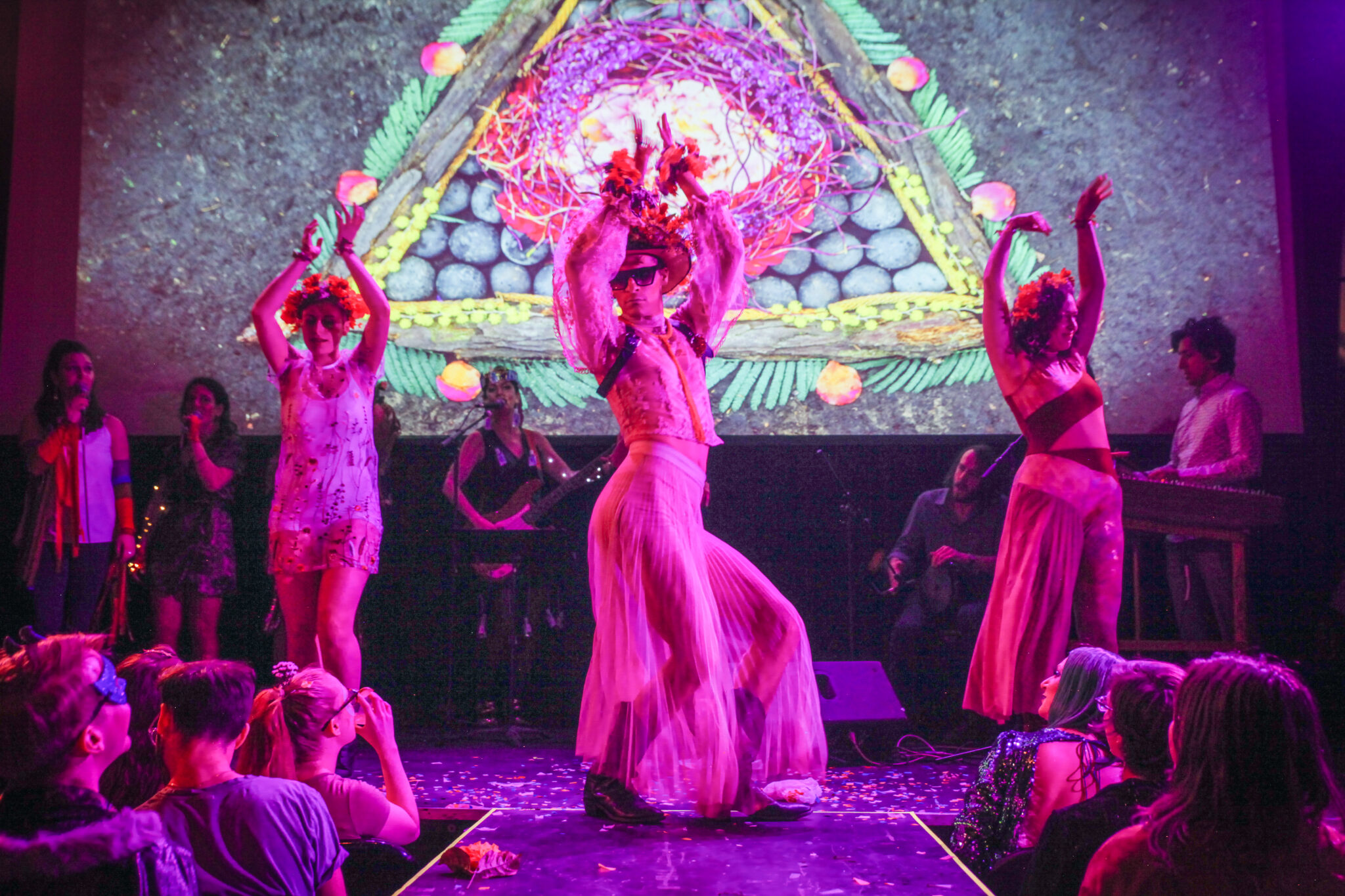Ezra Bookman is the founder of Ritualist, the first ever creative studio specializing in the design of rituals; the former artistic director for Lab/Shul, an experimental, artist-driven, God-optional Jewish community in New York City; and the youngest member of the board of directors of the Secret City, an Obie Award–winning arts organization.
Image: Your practice has a lot of dimensions. To me, the roles of artist and curator come to mind first, but also director, designer, and even coach. Is there a title you prefer?
Ezra Bookman: Honestly, all of the above. I feel less attached to a job description than to the question that has always driven my work: How does transformation happen? Right now, that question is manifesting through an obsession with ritual, particularly an exploration of why some rituals are more meaningful than others.
Image: I know you don’t love to pin something as complex and profound as ritual to a single definition. But can you tell us what ritual isn’t?
EB: Ritual is distinguished far more by internal orientation than external form, so it’s not really for me to decide whether what you’re doing is or isn’t a ritual. But I think problems arise when we conflate ritual, habit, routine, and tradition. Each of these is unique, and they serve different purposes. Flattening ritual to just a function of repetition deprives us of its power to deepen the experience of life. It also makes us susceptible to corporations that co-opt the language of ritual to sell us their products.

The Slow Down, 2018–20. Lab/Shul at House of Yes. Conceived and produced by Ezra Bookman. All photos: Ali Levin Photography.
Image: What makes a ritual work?
EB: The most important thing is having a clear intention. I break intentionality into three P’s: purposeful (Why am I doing this?), personal (Why am I doing this?), and particular (Why am I doing this?). After that, I examine the effectiveness of a ritual through seven lenses, or “lines” on which it travels: story, place, poetry, time, body, symbol, and meaning.
Image: What is your favorite ritual you have designed?
EB: I wrote and exhibited a ritual performance-art piece called Us for Lab/Shul’s Yom Kippur services. In the Torah, divine forgiveness on Yom Kippur was signaled by a red ribbon miraculously turning white. I wanted to interrogate whether, in the absence of magic and miracles, tangible proof of change can be possible today. So I dropped three thousand feet of red ribbon from the balconies above the worship space and instructed the community to pass it around until all twelve hundred people in the congregation were connected by the ribbon. We tried to turn it white. It didn’t work. So instead, we turned to one another for accountability in the slow, difficult, and opaque work of transformation. At the end, people could snip a piece of the ribbon and write their intention on it to use as a tangible reminder throughout the year of the commitment they made. Four years later, people tell me they still have their ribbons.

Us, 2018. Lab/Shul at Grand Prospect Hall. Written and performed by Ezra Bookman.
Image: People come to Yom Kippur with profound ritual expectations. Why is this such an important moment to think seriously about designing rituals for nontraditional times and spaces as well?
EB: Studies in behavioral science have shown that rituals increase feelings of control in times of uncertainty and create stable feelings of connection. We are living in a time of massive loss, uncertainty, disconnection, and change. Throughout human history, ritual has been one of our primary tools to navigate change, process grief, embody values, expand beyond ourselves, and envision a better future. We need ritual now more than ever, especially as we turn away from traditional institutions and toward new forms of belonging. I believe there is no such thing as a healthy individual without community or culture, and no such thing as a healthy community or culture without ritual.
Image: When you consult with clients, especially corporate ones, how do you foster experiences that don’t just become shortcuts for boosting productivity or job satisfaction?
EB: Rituals are friction. They’re sort of the anti-shortcut. Taking a moment of gratitude before eating is functionally useless and makes lunch take longer, right? So before agreeing to an offer, I ask potential clients a lot about their values and goals. I’m looking for leadership integrity and a commitment to systemic policy changes, not just surface-level offerings, because rituals that express values that aren’t practiced will breed a culture of cynicism and distrust.

Prophetic Post-Patriarchy Purim Performance Party (PPPPPPurim), 2018–20. Lab/Shul at House of Yes. Conceived, directed, and hosted by Ezra Bookman.
Image: What would you say to those who feel their religious traditions provide them enough of a ritual buffet, so to speak, that they don’t need to consider creating rituals?
EB: I’d say, “That’s awesome. Tell me about some of the rituals you love the most.” Eventually we might end up talking about how religious traditions have been creating new rituals and tweaking old ones throughout their history, and I’d encourage them to participate in that ongoing process in a way that feels authentic to them.





